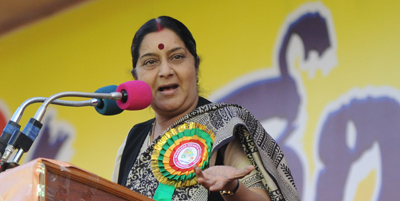I just returned from India, where I spent a week meeting journalists and discussing press freedom concerns. One issue that emerged during my visit is what is known euphemistically as “paid news.” Many media outlets routinely sell political advertising dressed up as a news article.
On March 13, the Editors Guild and the Indian Women’s Press Corps sponsored a lively discussion in New Delhi featuring an all-star lineup of journalists and officials from leading political parties, as well as the head of the electoral commission. At first blush, the issue seems pretty straightforward. Publishing political advertising disguised as a news article misleads the public and, panelists noted, violates journalistic ethics. It has an impact on press freedom because it allows politicians to control the news agenda. But as I learned, the forces that created paid news are complex, and eliminating the practice will not be easy.
As moderator Rajdeep Sardesai explained, the practice emerged initially in the entertainment sections when PR agents began paying newspapers for articles promoting their clients. This may not have been the pinnacle of journalistic excellence, but it did not directly undermine the integrity of the newsgathering function. But then politicians wanted in on the deal. Their basic argument was: If Bollywood stars can pay for favorable news coverage, why can’t we?
Moreover, the paid news phenomenon institutionalized a practice that was already widespread. Journalists in India, particularly at the provincial level, have long accepted cash payments in exchange for favorable coverage. As Sushma Swaraj, head of the opposition BJP party, told the audience, “First the journalists asked for tea, then liquor, and now money.”
Everyone at the event recognized that this was not a good situation. But now do you resolve it?
The politicians complained about being shaken down, but none were willing to renounce paid news unilaterally because it would give their rivals the upper hand. There is no law against paid news, and while several panelists called for new legislation, others were not excited about letting the government into the newsroom.
While journalists complained that the practice undermined their credibility, media corporations seem unwilling to renounce it because it generates significant revenue. Moderator Sardesai, one of India’s most prominent television reporters, suggested that, at a minimum, media companies establish standards and identify paid news item.
The issue of paid news is not going away any time soon. But what was encouraging was the intensity and passion of the debate. Journalists—or at least the ones who came out for the panel discussion on a Saturday morning—care deeply about the issue. Perhaps with more discussion and dialogue all parties will find their way towards a solution.
